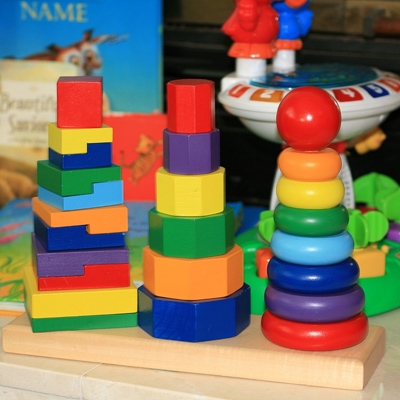Encourage Independence
Children often struggle with the notion of time, which can make it difficult to keep them focussed on tasks, causing stress for parents and nannies who are faced with the task of shuttling their children out of the front door on time for school, appointments and social engagements!
If you are a parent or carer who frequently finds yourself uttering the words, “look at the time”, “we have to go”, “we are going to be late” and similar phrase; a simple timer could be the ideal solution for you!
Its incredible how well focussed a child can be when faced with their favourite cartoon, or digital game. They can remain engaged and fully focused for an hour with no issues whatsoever. However, try asking them to stand next to the sink and focus on the task of brushing their teeth efficiently for two minutes in the morning and all of a sudden, it looks something like mission impossible!
No parent or carer enjoys having to nag repeatedly to keep their little loved ones focussed and on task. A timer could be the key to avoiding stress and exasperation when trying to get ready and out in the mornings. It could also be an invaluable aid for getting things done quickly and efficiently so that you are able to move on with your day!
Choosing A Timer
The idea behind using a timer is that it provides the child, or children with a clear visual aid to show them the speed in which the time is ticking on the clock, and how much time they have left to complete a task.
If for example the main issue you want to tackle is a full two minutes of tooth brushing, a basic sand timer would do the job perfectly well. Simply flip the timer as the child begins brushing and they will know that it is time to stop when all of the sand has passed through.
For longer tasks, a better one like ‘time countdown’ or time tracker’ would be more appropriate, as this type of timer typically allows you to set a time of between 1 and 60 minutes, with the remainder of the time clearly indicated. This sort of timer would be suitable for demonstrating anything from; ten minutes on revision for a spelling test, five minutes to tidy up the toys, or 25 minutes playtime before bedtime.
With a visual aid to demonstrate the amount of time left to do said task, there are no surprises when the time is up, which can prove incredibly helpful for any child who is prone to distraction.
Developing Independence
Rather than having to rely on an external force to push them along and keep them on task, many children relish the opportunity to assert their independence. After a few mornings of encouraging a child to keep brushing until the sand is gone, you may be surprised to find them with the timer in mid flow and brush in hand, getting on with their daily routine and using their own initiative!
Make It Fun!
When children perceive a task as a chore, they lack enthusiasm and drag their feet, but it is easy to make the dullest of tasks more appealing just by altering your use of language.
Instead of telling them it is time to pack the toys away before dinner, try challenging them to a few minute ‘challenge’ to carry out the same task. Alternatively, for a child who takes forever to get herself dressed in the morning, see if a ‘speed test’ with the timer set on the bedside table helps to egg her along and make it all feel a bit more fun in the mornings.
Creating positive routines helps to reinforce a happy home environment and your kind words of praise and encouragement when the homework is suddenly completed in record time, or those pesky socks find their way onto their owners feet in less than two minutes will undoubtedly help to seal the deal!

